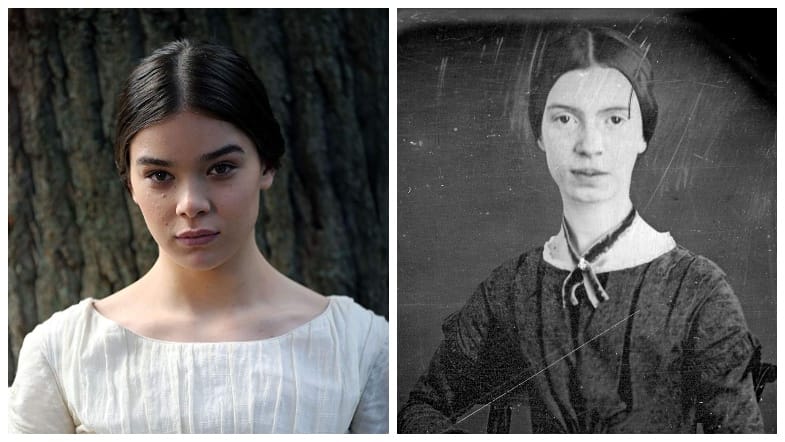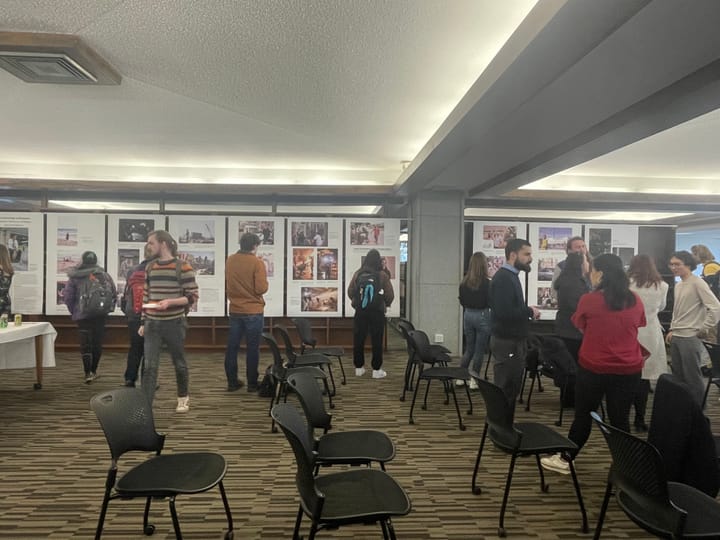TV Show “Dickinson” Feels Out of Touch with Reality

If Amherst, both the college and town, bears the mark of any single person it would be Emily Dickinson, whose image hangs in Johnson Chapel alongside our past presidents and whose house sits comfortable in town on the perimeter of campus.
The house where she grew up and lived is now a well-visited museum, and the Amherst library holds a substantial portion of her poems. She is an incredibly influential figure in the literary world. However, we actually know very little about Dickinson’s life and relationships, save for a handful of precious firsthand accounts from family and friends.
This lack of concrete information leads us to ask: who is Emily Dickinson? This question seems to have been the starting point for the creation of “Dickinson,” a new TV show on Apple’s new streaming service Apple TV+.
A comedy, biopic and teen drama all at once, the show makes good use of available anecdotes and facts about the poet to ground the plot. But the creative freedoms that the show is forced to take results in a failure to live up to her name and influence in almost every way.
“Dickinson’s” main strength is in the show’s setting. It is clear that an incredible amount of attention and money was invested into reconstructing the Dickinson house, recreating tiny details like the straw mats that cover the bedroom floors and Emily’s miniscule writing desk.
The costumes are impressive as well and immerse the viewer. However, everything onscreen feels a little too clean. The makeup, prim and contemporary, and the camerawork, smooth and mapped, both feel insincere to the time and the character.
Beyond the aesthetics, when the characters start talking, the real creative choices of the show come into focus. The show flip-flops between contemporary and 19th-century English. The period-appropriate speech is strong, imbuing the show with some much-needed humor. But the contemporary moments (throughout most of the show) are formal and poorly written, almost laughably so.
Emily (Hailee Steinfield) greets her brother with a casual “bro,” then goes on to speak to him as if they are vague acquaintances, not siblings. The music, too, is firmly contemporary and this insistence on modern tunes only works sometimes; for instance, Lizzo’s “Boys” is a favorite, bursting forth as Emily and her best friend and lover Sue (Ella Hunt) cross-dress. Most other times, however, the music feels peculiar, contemporary just for the sake of “pushing the envelope.”
Just as the choices work so strongly in these few moments, the same practice falls short in most others when it’s employed. The cast has mixed success in being able to portray their respective characters effectively. Jane Krakowski is a standout. Playing Emily’s mother Mrs. Emily Norcross Dickinson, she delivers snarky comments beneath a hostess’ smile and delivers the show’s funniest moments.
For lack of a better description, Krakowski simply feels like a better actor than the rest of the cast. Emily herself shines in certain scenes but stumbles at key emotional moments, partially because of bad writing. When Sue is forced to marry Emily’s brother Austin (Adrian Enscoe), Emily sounds childish instead of heartbroken. Her father, Edward Dickinson (Toby Huss), brother Austin and sister Lavinia (Anna Baryshnikov) are strong actors but also suffer because of the bad writing. I found that this, rather than poor performances on the actors’ behalf, was a key problem.
The creators clearly did research to base certain plot points off of real-life information; Emily Norcross refuses to employ a maid for many years, and Emily learns to bake bread, which her father takes a liking to, in real life and in the show. These points are tied together in clever ways, little secrets that reward a viewer’s familiarity with the poet’s life.
But sometimes, the plot feels downright unbelievable. Emily orgasms in cue with a baking soda volcano. She does opium and dances with a giant, computer-generated bee. She acts out her poem “Because I could not stop for Death,” courting Death (Wiz Khalifa) in a carriage drawn by ghostly horses that look downright terrible.
The list goes on; it wouldn’t be so bad if these ridiculous scenes were entertaining, but it feels contrived and disingenuous. Would Emily Dickinson do this? This question stuck with me while I watched the first few episodes. I saw no signs of improvement even after the fourth episode.
The only way in which the show directly conflicts with known information about her life is in Emily’s relationships. Conflicts with her parents and two siblings feel fabricated and gratuitous.
The sense of self-reflection and appreciation for nature that populate her poetry are nowhere to be found in her daily life or motivations for writing. The character’s rash behavior feels like a lack of care and intent on the part of “Dickinson’s” creators. The show needs this rebelliousness to push forward the plot and warrant character growth. However, it does so at the cost of Emily Dickinson’s spirit. Perhaps her poetry simply isn’t adaptable to a show like “Dickinson.”
If Dickinson abhorred alterations of letters or words in her poetry, how would she feel about “Dickinson,” which not only sensationalizes her poems but also her whole life? At times, the show is genuinely funny. But the humor is drowned out by a sea of cringe-inducing attention grabs and offensively mediocre writing.
So, anyone up for a sexy, scandalous show about Robert Frost next?





Comments ()